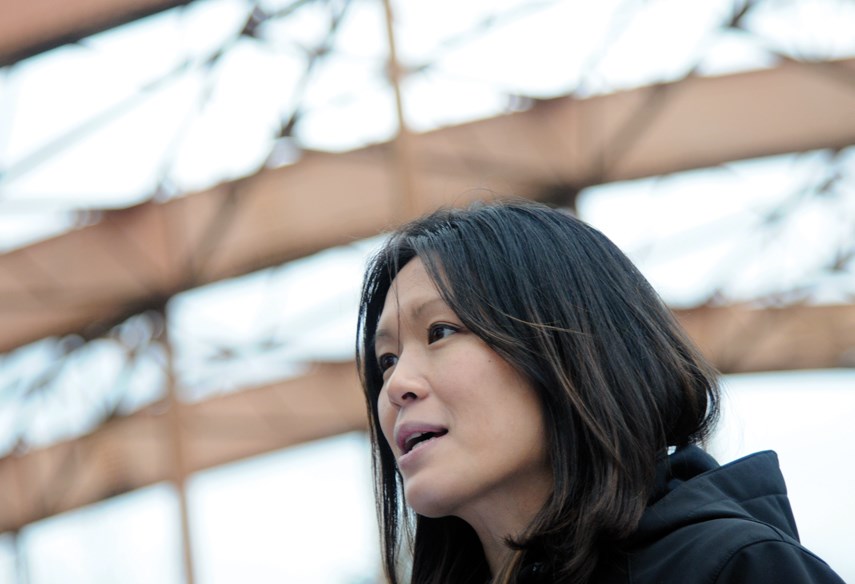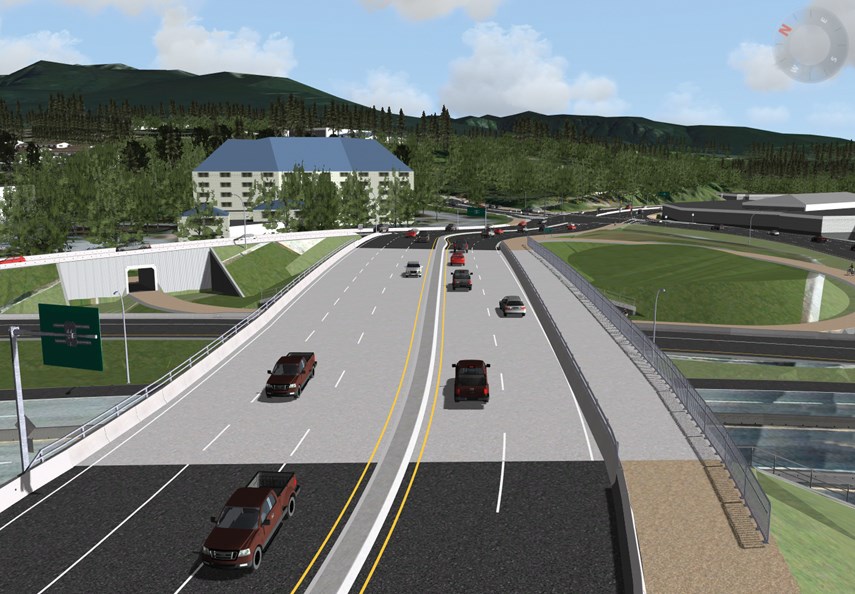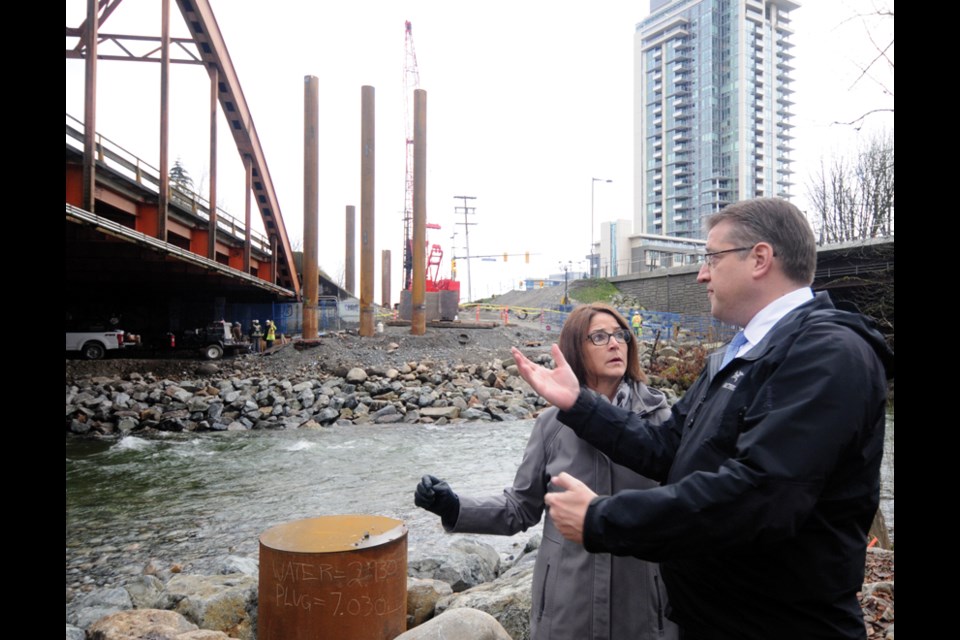North Vancouver politicians marked the next phase of the massive Lower Lynn highway interchange improvement project Monday with shovels at the ready, saying improved east-west connections should make life easier for drivers on the North Shore but admitted there is no magic solution for local traffic woes.
Politicians acknowledged traffic snarls across the North Shore remain one of the top frustrations for local residents.
“We are all aware that commuters are frustrated by growing congestion on the North Shore,” said North Vancouver-Lonsdale MLA Bowinn Ma. “We hear that people are late to work, late dropping kids off at school, late to appointments because they are stuck in traffic.”
That can be “infuriating,” Ma acknowledged.
But she said the next phases of the highway project - which began recently and are scheduled for completion in the fall of 2021 - should help with that.

Highlights of the next phase of the project include construction of two new bridges on both sides of the existing four-lane Lynn Creek Bridge, a new five-lane Keith Road overpass over Highway 1, a new Mountain Highway eastbound on-ramp to the highway, upgrades to the Mount Seymour Parkway westbound off-ramp and two new westbound lanes connecting Mount Seymour Parkway and Mountain Highway.
The province will also re-surface and re-coat the deck of the existing 58-year-old Lynn Creek Bridge as part of the project.
A big part of the work is designed to provide new east-west connections for local drivers without forcing them into highway traffic bound for the Ironworkers Memorial Second Narrows Crossing. Better on- and off-ramps are also expected to cut down on the number of collisions, which often have the effect of bringing North Shore traffic to a standstill.

According to the ministry, when the project is complete it’s expected to cut nine minutes off travel during rush hour from the top of the Cut to the Ironworkers bridge going eastbound and four minutes going westbound. The project is also expected to reduce the risk of crashes along that stretch of highway by one-third.
Jonathan Wilkinson, MP for North Vancouver, said separating the east-west traffic from the through traffic was one of the key improvements to the highway project he advocated for and campaigned on during the last election.
Politicians of all levels acknowledged Monday traffic is an issue they frequently get an earful about from voters.
“If you’re a politician at any level and you’ve door knocked on the North Shore, the one thing that’s come up over and over and over again is traffic congestion,” said Terry Beech, MP for Burnaby North-Seymour. “Everybody’s heard about it.”
One of the first signs of this latest phase of the project will be tree cutting along the south side of Highway 1 between Mountain Highway and the Lynn Creek Bridge in late January and early February.
Another visible part of the attempt to improve traffic on the North Shore will be sixteen portable digital message signs that will be installed in January as a pilot project. The signs – which will be installed at strategic locations approaching on and off ramps along Highway 1 as well as along key feeder routes - will post real-time information about lane closures, traffic conditions and accidents, so that drivers can make better decisions about their routes while in transit and slow down when approaching areas of traffic congestion.
New cycling paths and pedestrian trails are also part of the project.
The first phase of the huge highway project, the new Mountain Highway interchange, was initially scheduled for completion in October but has been delayed by about nine months. Some of that delay was due to additional utilities work done in the area – including everything from new sewer municipal connections to work by BC Hydro and Telus - which made sense to complete while roadwork was being done, said Jay Porter, a senior project manager with B.C.’s transportation ministry.
The cost of that additional work is being borne by those utilities and won’t affect the budget of the project, he added – nor is it expected to impact later phases of the highway project.
Cost for the $198-million project is being shared by the province ($76.7 million) and federal government ($66.6 million), as well as District of North Vancouver taxpayers, who are contributing $54.7 million.
District of North Vancouver Mayor Mike Little said when it’s finally complete, the project will help address traffic problems including large numbers of vehicles coming down Keith Road and “rat running” through secondary roads like Kirkstone by frustrated drivers trying to get around the North Shore.
“We’re definitely at capacity,” he said. “Any obstruction creates a huge ripple effect.”
Transportation issues are also having an impact on other issues – like the new council’s willingness to take on more development.
“It’s always been my view that transportation infrastructure should lead growth rather than the other way around,” he said.



